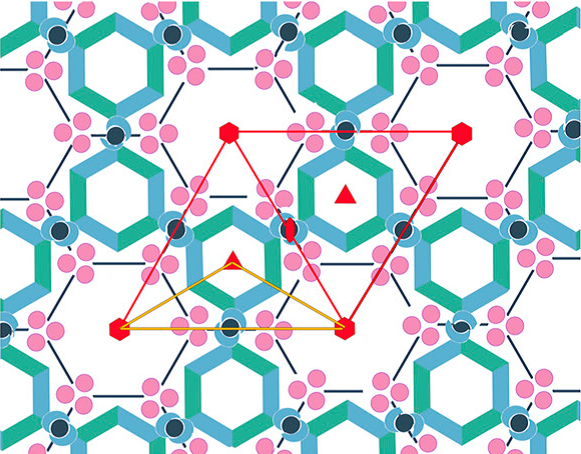X-RAY RUNS: Apply for Beamtime
2017 Nov 1 - Dec 21
2018 Feb 7 - Apr 3
2018 Proposal/BTR deadline: 12/1/17
2018 Apr 11 - Jun 4
2018 Proposal/BTR deadline: 2/1/18

Structure of native chemoreceptor arrays. The arrangement of components within the receptor array produces P6 point symmetry (P6 unit cell boxed in red, with the asymmetric unit in yellow; six-, three-, and twofold symmetry axes are designated in red). The publication provides a movie that summarizes in a step-by-step animation how the new electron cryotomographical and X-ray crystallographic data were used to elucidate the array structure shown in D.
Cornell Chronicle writer Vivek Venkataraman interviews CHESS user Brian Crane on his recent publication in the Feb. 20 issue of the Proceedings of the National Academy of Sciences. This work was also highlighted on the Cornell University home page.
The Chronicle writes:
"Cornell researchers have peered into the complex molecular network of receptors that give one-celled organisms like bacteria the ability to sense their environment and respond to chemical changes as small as 1 part in 1,000.
Just as humans use five senses to navigate through surroundings, bacteria employ an intricate structure of thousands of receptor molecules, associated enzymes and linking proteins straddling their cell membranes that trigger responses to external chemical changes.
Researchers in the lab of Brian Crane, professor of chemistry and chemical biology, with collaborators in the lab of Grant Jensen at the California Institute of Technology, have mapped out the honeycomb-like hexagonal arrangement of these receptor complexes in unprecedented detail.”
See the Cornell Chronicle article:
http://www.news.cornell.edu/stories/2012/02/honeycomb-structure-responsible-bacterias-sense
PDF
And the full publication (may require subscription):
http://www.pnas.org/content/early/2012/02/14/1115719109.abstract
Submitted by: Ernie Fontes, CHESS, Cornell University
02/24/2012
